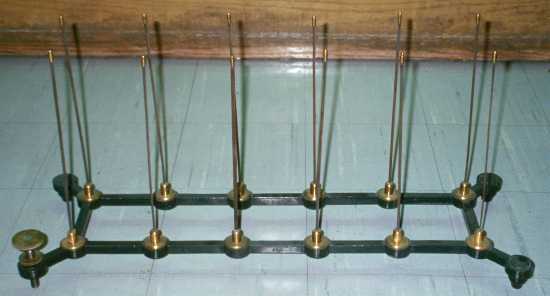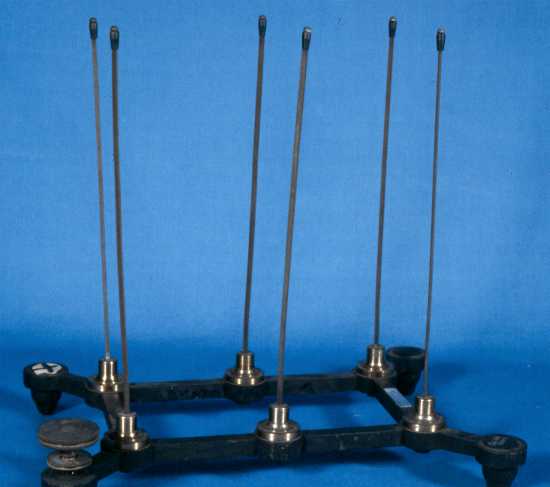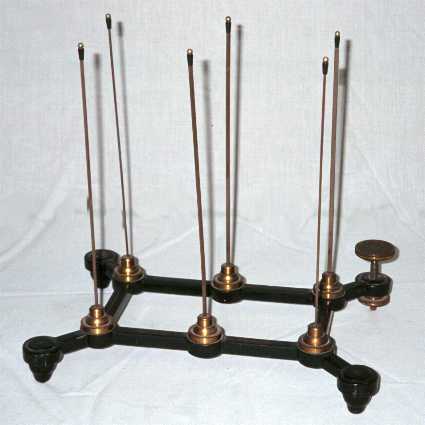Kaleidophone
The inventor of the Kaleidophone, Charles Wheatstone (1802-1875),
called it a "Philosophical Toy." It produces optical figures in space that
may be enjoyed in their own right, or that may be the source of considerable
analysis. Wheatstone published an account of the device in 1827. Its name
derives from Kaleidoscope,
the optical device which had recently been devised by the Scottish physicist
David Brewster.
There are different versions of the Kaleidophone, but in
all cases a slender rod, fixed at one end, is set into transverse vibrations.
A small, polished bead fixed to the end of the rod reflects light from a
light source, enabling the motion to be followed by the eye. If the wire
is circular or square, the bead describes one-to-one Lissajous figures; if
it has an oval or rectangular cross-section, it will describe more complicated
Lissajous figures. A different form of Kaleidophone is described in another
page .
Koenig sold two versions of the Kaleidophone, both described
in his 1889 catalogue. The version with twelve rods (at the Garland Collection
of Classic Physics Apparatus at Vanderbilt University, and purchased c.
1875 from Koenig) was 100 francs ($20.00), and the one with six rods (at
Wesleyan University in Middletown, Connecticut) was 60 francs ($12.00).



|
The Kaleidophone at the left is essentially
identical to the Koenig model above but it is clearly marked with the name
of Max Kohl of Chemnitz, Germany.
It was bought by Hobart and William Smith Colleges from Kohl
in the late 1920s. The contemporary Kohl catalogue noted that "when struck,
the differently shaped rodes give directly the corresponding Lissajous curves.
The figures shine out large on the ceiling under incident light."
It seems clear that after Koenig's death in 1901, other firms continued to
produce some of his apparatus.
|
REFERENCE: Thomas B. Greenslade, Jr., "Nineteenth Century Textbook Illustrations
LI: The Kaleidophone", Phys. Teach., 30, 38-39 (1992)
Return to Koenig Home Page | Return to Home Page